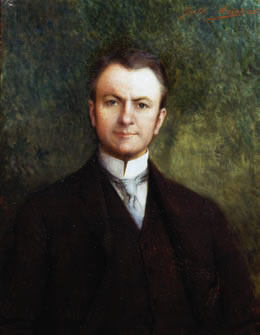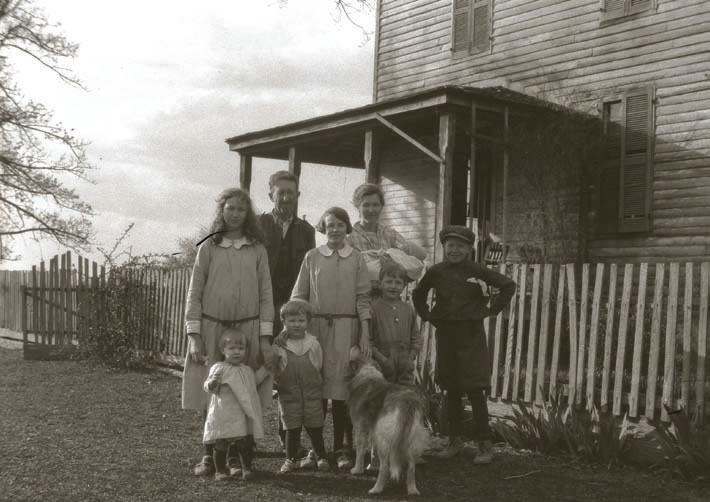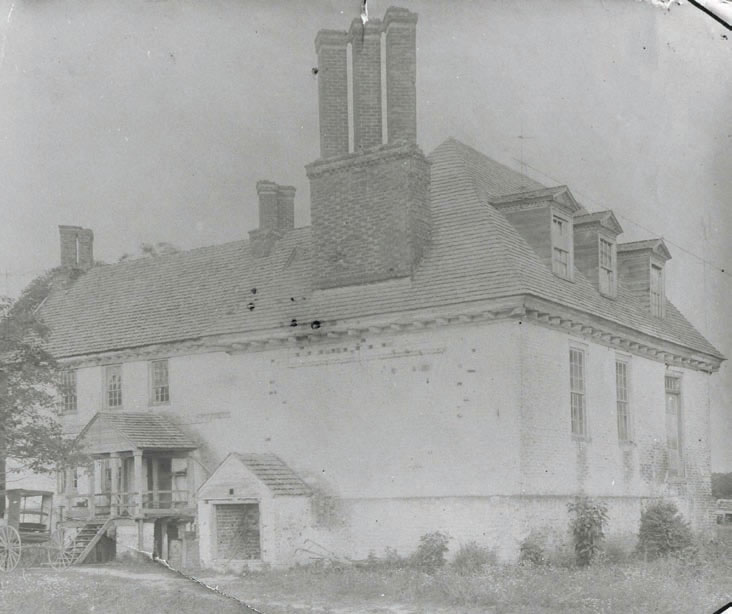My Trip to The Filson
The Changing Landscape of the Southern Plantation
By Dave Brown
College of William & Mary, Filson Fellow
About |
 When I arrived at The Filson Historical Society last May, I intended to study landscape change on colonial and early American plantations in southeastern Virginia. Now, I am sure you are thinking, “Why would I travel from Virginia to Kentucky to do this?” The Filson has many of Kentucky’s most significant family papers, among numerous other wonderful collections that cover a wide array of fascinating topics. But, from a quick glimpse, 18th and 19th century Chesapeake plantations would not be one of these. When I began my dissertation research in 2005, I never imagined traveling to Kentucky. I was, and still am, studying at the College of William and Mary, perfectly situated in time and place to fulfill my research needs. Alas, a strange and wonderful surprise awaited me out West.
When I arrived at The Filson Historical Society last May, I intended to study landscape change on colonial and early American plantations in southeastern Virginia. Now, I am sure you are thinking, “Why would I travel from Virginia to Kentucky to do this?” The Filson has many of Kentucky’s most significant family papers, among numerous other wonderful collections that cover a wide array of fascinating topics. But, from a quick glimpse, 18th and 19th century Chesapeake plantations would not be one of these. When I began my dissertation research in 2005, I never imagined traveling to Kentucky. I was, and still am, studying at the College of William and Mary, perfectly situated in time and place to fulfill my research needs. Alas, a strange and wonderful surprise awaited me out West.
My research focuses specifically on Fairfield plantation, including its magnificent 1694 manor house once surrounded by 7,000 acres of tobacco fields in Gloucester County, VA. I am examining how the plantation changed from the late 17th century through the early 19th century, looking primarily at the Burwell Family and their colonial legacy as one of the Old Dominion’s most influential, yet understudied, families. Five generations invested in a complex agricultural landscape, responded to changes in architectural styles and formal garden arrangement, and endured a chronically unstable tobacco economy. They also owned over 100 enslaved African and African-Americans whose labor was largely responsible for the Burwell’s financial success.
 As an archaeologist and historian, I’m fascinated by my continued excavations of this now ruined manor house and its surroundings. Changes in the placement of buildings, fields, roads and gardens, coupled with changes in design and the materials used in their construction, provide fascinating glimpses into a world seldom recorded in historical documents, but essential to our understanding
As an archaeologist and historian, I’m fascinated by my continued excavations of this now ruined manor house and its surroundings. Changes in the placement of buildings, fields, roads and gardens, coupled with changes in design and the materials used in their construction, provide fascinating glimpses into a world seldom recorded in historical documents, but essential to our understanding
of life at this time. I’m equally fascinated by how this evidence and the questions it poses inform our discipline’s larger historiographical questions. How does the rearrangement of enslaved labor, particularly their housing, inform us about their lives? Was this rearrangement part of a larger redesign of the plantation landscape, incorporating the complete transition from tobacco to mixed grains and livestock? Or was this reflective of larger financial downturn or social changes coinciding with the birth of a new democratic nation? Perhaps my research at The Filson would help answer these questions.
But I still haven’t answered the most important question: “Why am I at The Filson Historical Society?” The short answer is Robert C. Ballard Thruston, or RCBT as he was referred to during my stay. The longer answer, as you might expect, is more complicated. The untimely death of Lewis Burwell, fifth generation owner of Fairfield, in 1779 left the family with massive debts to creditors and with a largely infertile and costly plantation. Robert Thruston purchased the core 500 acres of the estate in the 1780s, invested his own inheritance in its reorganization, and endeavored to resurrect this once grand plantation. Only two sources remain that can add to our understanding of this period: the archaeological record at Fairfield and the Robert Reade Thruston papers housed at The Filson.
The Robert Reade Thruston papers are a very significant collection of primary documents dealing with a southeastern Virginia family and their plantation, and are invaluable to my research. They include the earliest known plan of the Fairfield property (1787), receipts for the purchase of enslaved Africans and African-Americans, accounts for the medical treatment of the Thruston family and their enslaved workforce, and essential genealogical information that clearly established the ownership of the plantation and how, in the second quarter of the 19th century, it passed into tenancy and was later sold out of the family. Fires twice destroyed Gloucester County’s records, first as a result of arson to the clerk’s office in 1821 and second by the Siege of Richmond in the Civil War. While the Robert Reade  Thruston papers illuminate an understudied region of southeastern Virginia’s history, they also provide historians and archaeologists with a chance to look at a family’s actions on multiple plantations over multiple generations, Fairfield representing just a portion of that story.
Thruston papers illuminate an understudied region of southeastern Virginia’s history, they also provide historians and archaeologists with a chance to look at a family’s actions on multiple plantations over multiple generations, Fairfield representing just a portion of that story.
The Thruston family remained in Gloucester County through the early 20th century, but not at Fairfield.
A branch of the family settled on a portion of the 18th century tract and, when the core was sold in the 1850s, continued to farm their small acreage through the Civil War, the turn of the century, and into the Great Depression. It was at this time that RCBT visited. Coinciding with American society’s renewed interest in colonial history and ancestry, as seen in the Rockefeller’s creation Colonial Williamsburg and the Association for the Preservation of Virginia Antiquities rescue of the Jamestown church, many individuals visited the now ruinous Fairfield plantation, taking photographs and perhaps a souvenier brick or ceramic sherd to remind them of the occasion and the significance of this once proud and powerful family. When RCBT visited, though, he took home with him something far more important. After visiting with Robert Reade Thruston in March 1925, he negotiated the purchase of the family’s papers which he intended to bring with him to The Filson, where he was a prominent member and frequent contributor. After a short stop in Taunton, MA for archival conservation and binding, the papers found a new home in Louisville. Wonderfully cared for, they awaited my arrival.
Perhaps the most rewarding discoveries during my trip, though, were the personal papers of RCBT. Remembered as a stickler for details, a fact I learned upon reading his extremely small journals (one measuring only one inch by three), he recorded the people he met, the hospitality he received and even the floor plan for the room he stayed in at a hotel in Yorktown – down to the type and placement
of the heater in the room’s corner. Along with remarkable photographs of everything except the ruins at Fairfield, he painted a picture of the rural landscape of southeastern Virginia that reflected pride and confidence, feelings more often attributed to the region during the colonial period than the early 20th century. The Robert Reade Thruston papers attracted me to The Filson Historical Society, the generous Filson Fellowship physically brought me there, but it was RCBT that made it a most fulfilling experience and changed how I look at my dissertation. I hope to return to The Filson in the near future, to work with the extremely helpful staff in such a wonderfully congenial environment, and learn more about this tiny little corner of Virginia hidden in Kentucky.
The Filson Historical Society
1310 South Third Street - Louisville, KY 40208
Phone: (502) 635-5083 Fax: (502) 635-5086
Hours
The Ferguson Mansion and Office
Monday - Friday: 9 am. - 5 pm.
Saturday and Sunday closed
Library and Special Collections
Monday - Friday: 9 am. - 5 pm.
First Saturday of each month: 9 am. - 4 pm
